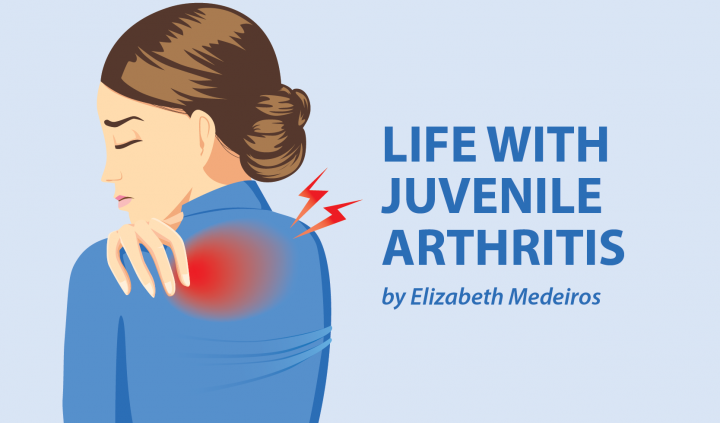I loved watching “Schoolhouse Rock!” in school. I don’t think I would have learned the 8 times multiplication table without the song “Figure Eight.” And you better believe I can’t tell you what a conjunction is without mentally singing, “Conjunction Junction, what’s your function?” To this day, my mantra is, “It’s great to learn ’cause knowledge is power!”
My mantra applied a lot when I hit my teen years. As someone with juvenile arthritis (JA), I heard plenty of statements about what my future might hold from those who meant well. Sometimes the facts sounded great, and other times they sounded odd. As a teenager, I wanted to feel in control of my health, so I began to question what was really true.
Through careful research and by asking questions of my pediatric rheumatologist, I found the answers to several myths that kids with JA frequently hear. And while the myths were comforting at times, I’m glad I knew the truth and what to expect. Not only did I avoid disappointment, but also it helped me plan for success.
I debunked these three common myths:
Myth 1: Kids grow out of juvenile arthritis.
Kids with JA often are told they’ll grow out of it. And for some, there’s a good chance they will. Many of those with the oligoarthritis subset — JA that affects fewer than five joints — do outgrow it by adulthood. But that doesn’t happen for every child.
I often heard this myth from those who meant well and were trying to make me feel better. I still hear people say they are surprised that I didn’t outgrow it. But as a teen, I was glad my doctor told me there was a good chance I would still have arthritis as an adult. Knowing the truth helped me to stay positive, especially when I woke up on my 18th birthday and was still hurting.
Myth 2: You don’t have to take medicine when you’re in remission.
If only it were so easy. But some people with JA who achieve remission are only able to stay in remission with medication.
I know it’s not ideal, but it doesn’t have to be the end of the world. Once you find a treatment that works, it’s easier to stick to it. Finding the right treatment was a huge chunk of the battle! I know many kids who have been on the same treatment for years with no disease activity.
I achieved remission in my senior year of high school using Enbrel (etanercept). It was an incredible year. I felt as if I finally got to live my life. It would have been great to stop giving myself shots twice a week, but it was a small price to pay for so much relief. I’m thankful for the year that I had without active arthritis.
Myth 3: Once you’re an adult, juvenile arthritis becomes rheumatoid arthritis.
Referring back to Myth 1, JA sometimes follows you into adulthood. But the diagnosis of juvenile arthritis doesn’t turn into rheumatoid arthritis the day a child turns 18. Juvenile arthritis will always be juvenile arthritis, although the way you talk about it usually changes. You may call it juvenile-onset arthritis when giving a medical history. And while I now say I have psoriatic arthritis, I will always be someone with juvenile-onset psoriatic arthritis.
That said, many people who had JA as children do go on to be diagnosed with rheumatoid and other forms of arthritis. Juvenile arthritis is a term that groups many subtypes of arthritis, all of which have different outcomes. The arthritis subset the child had will dictate which type they’ll be diagnosed with as an adult. Kids with enthesitis-related arthritis often are later diagnosed with spondyloarthritis.
The good news is that it doesn’t mean your child has more than one type of arthritis. It’s a way for rheumatologists to treat the condition more accurately in adulthood.
And one truth: Knowledge is power.
These are not the most reassuring facts I could have shared. But knowledge is power, and the more your family knows, the better you will be able to plan and cope with the future. It’s better than being comforted by myths.
Science is advancing every day. Kids with JA have better outcomes, and there are more treatment options than ever before. We can’t predict the future, but there are many reasons to hold onto hope for kids with JA.
***
Note: Juvenile Arthritis News is strictly a news and information website about the disease. It does not provide medical advice, diagnosis, or treatment. This content is not intended to be a substitute for professional medical advice, diagnosis, or treatment. Always seek the advice of your physician or other qualified health provider with any questions you may have regarding a medical condition. Never disregard professional medical advice or delay in seeking it because of something you have read on this website. The opinions expressed in this column are not those of Juvenile Arthritis News, or its parent company, BioNews Services, and are intended to spark discussion about issues pertaining to juvenile arthritis.

